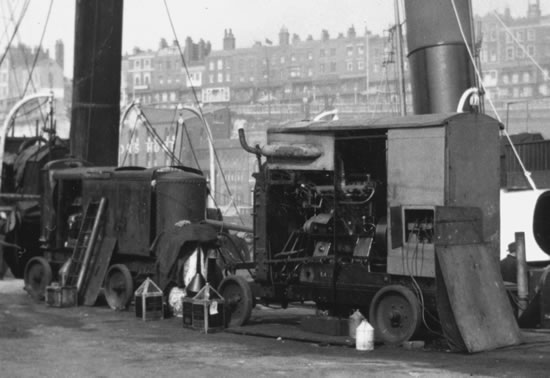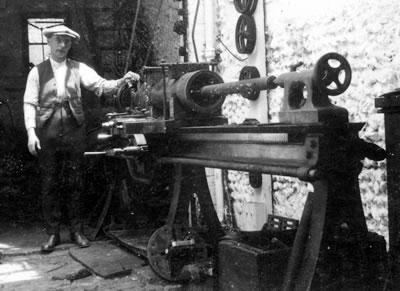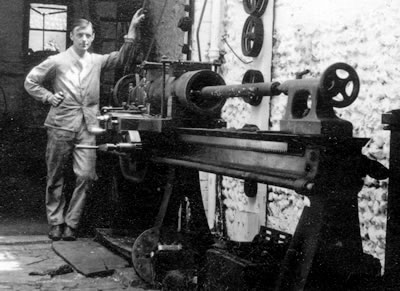


 This photograph taken from my collection of old prints shows a typical working scene of two lads at a shipyard in East Kent, during the early 1920s. The lads are standing next to a four-cylinder Aster of Wembley, Middlesex, powered generating set. The engine of the 10 to 15bhp size, with its own cast iron base, is mounted on an iron wheeled trolley, that was quite possibly fabricated in the yard. It is fitted with side curtains to protect the generator from the weather while sitting on the quay.
This photograph taken from my collection of old prints shows a typical working scene of two lads at a shipyard in East Kent, during the early 1920s. The lads are standing next to a four-cylinder Aster of Wembley, Middlesex, powered generating set. The engine of the 10 to 15bhp size, with its own cast iron base, is mounted on an iron wheeled trolley, that was quite possibly fabricated in the yard. It is fitted with side curtains to protect the generator from the weather while sitting on the quay.
